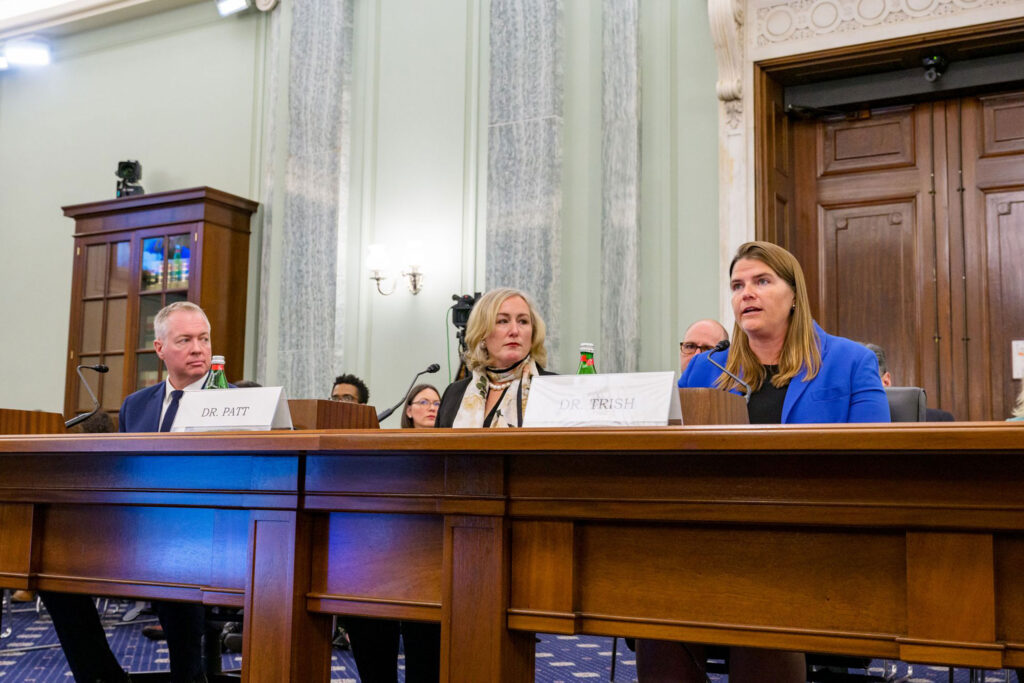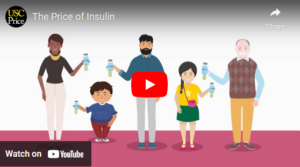Schaeffer Center Co-Director Erin Trish told a U.S. Senate committee on Thursday (2/16) that opaque pricing by pharmacy benefit managers (PBMs) creates mystery in the drug distribution system, “and where there is mystery, there is margin.”
Trish was part of a panel of witnesses called to testify before the Committee on Commerce, Science and Transportation, which is preparing for a vote on the Pharmacy Benefit Manager Transparency Act recently reintroduced by Sen. Maria Cantwell (D-Wash) and Sen. Chuck Grassley (R-Iowa). The legislation seeks to shine a light on PBMs and empower the Federal Trade Commission (FTC) and state attorneys general to stop unfair and deceptive PBM business practices.
PBMs negotiate for lower drug prices on behalf of company health plans, insurers, unions and government entities. But their negotiations are secret and evidence points to the PBMs keeping more of those negotiated discounts for themselves rather than passing them to patients.
“Prescription drug markets are complicated, and it takes a lot of boxes and arrows to show you even a simplified version of how the dollars and goods flow,” said Trish, who is also an associate professor at the USC Mann School of Pharmacy & Pharmaceutical Sciences. “While this complexity keeps health economists like me in business, it still remains a mystery to most Americans.”
Lack of transparency and competition in the PBM market dominate Senators’ questions
Cantwell, the committee chair, opened the hearing by focusing on the lack of clear information about where the money goes in the pharmaceutical distribution system. “We can look at this market. We can understand what is going on and we certainly can benefit from more transparency,” she said.
Senators Ted Budd (R-N.C.), Jon Tester (D-Mont), Shelley Moore Capito (D-W.Va.), John W. Hickenlooper (D-Colo.) and Dan Sullivan (R-Alaska) joined Sen. Cantwell in focusing their questions on transparency, many of which pointed to the Schaeffer Center work on insulin distribution markets.
“What we have seen is that over time PBMs have, in fact, been effective at lowering the net prices that those insulin manufacturers are receiving,” said Trish. “But what patients care about is how much we are actually spending on these products and the research showed that has roughly been flat over time.” Instead, the share of expenditures going to intermediaries has increased.
Casey Mulligan, an economist at the University of Chicago, questioned the need for more transparency, predicting that the bill could add burdensome regulations and actually increase drug prices.
Unlike the world of physicians and hospitals where there are clear negotiations and prices established with insurance companies, the world of PBMs is much more opaque, Trish said in response to a question from Sen. Budd.
“If we had a flow chart it would be more difficult to read than a flow chart from the Corps of Engineers,” said Sen. Capito.
“Transparency is the most important piece to deal with,” said Dr. Debra Patt, an oncologist who also testified. “There are other issues but as you deal with PBMs it is a game of whack-a-mole. Transparency sheds light on other challenges.”
Impact on independent and rural pharmacies
Independent and rural pharmacies play a vital role in the healthcare system in many communities. Many senators pointed to the increasing closures of pharmacies in smaller communities and asked about the role vertical consolidation and fees from PBMs play in these closures.
“Our ability to care for our patients is under a very clear threat from harmful PBM practices that are costing our patients and limiting their access to pharmacy services,” said Dr. Ryan Oftebro, a pharmacist who owns five community pharmacies in the Seattle area.
“Local pharmacies are absolutely essential to the delivery of quality healthcare,” said Sen. Peter Welch (D-Vt), who focused his question on what effects PBM clawbacks of Direct and Indirect Reimbursement (DIR) fees are having on pharmacies.
Oftebro and Patt spoke about how these fees and unclear negotiations negatively impact their patients, while Mulligan noted the need to consider the trade-offs in implementing more regulation.
“I agree with Professor Mulligan. PBMs do need tools to effectively negotiate,” said Trish. “But when that happens in a highly opaque and complex market when PBMs are the ones holding all the information and initiating many of these fees after the fact in ways that do not reflect value, that is a concern and that is a problem.”
We need to be focused on how these business practices are affecting rural pharmacies, said Sen. Tester. “If you don’t have a pharmacy in your small town it makes healthcare much more complicated.”
Patients often shoulder the burden
Dr. Patt said that PBMs play an increasingly large role in determining which oncology medicine she can give her patients first. “Frequently we are not able to make those choices because of formulary restrictions. Instead we encounter preferential choices that might be more expensive for the patient.”
“The consumer should be the point of everything we do,” said Sen. Grassley.
Trish’s testimony can be read in full here.
Sign up for Schaeffer Center news
Related Work
-
Data Visualization
Untangling the Price of Insulin
-
Data Visualization
The Price of Insulin, Explained





